- Heliopsis: Tips for Growing and Caring for Heliopsis
- Introduction
- Choosing the Right Location
- Planting Heliopsis
- Watering and Fertilizing
- Pruning and Deadheading
- Pest and Disease Control
- Winter Care
- Conclusion
- Growing Heliopsis in the Open Ground
- Heliopsis Soil and Sun Requirements
- Soil Requirements
- Sun Requirements
- Watering Requirements
- Fertilizer Requirements
- Watering Heliopsis Plants
- Fertilizing Heliopsis Plants
- 1. Choose the right fertilizer
- 2. Apply fertilizer at the right time
- 3. Follow the recommended dosage
- 4. Apply fertilizer evenly
- 5. Water after fertilization
- 6. Monitor plant response
- Pruning Heliopsis for Better Growth
- 1. Timing
- 2. Deadheading
- 3. Thinning
- 4. Cutting Back
- 5. Pruning After Blooming
- 6. Disinfecting Tools
- 7. Cleaning Up
- 8. Observing Plant Response
- Controlling Pests and Diseases in Heliopsis
- Pests
- Diseases
- Tips for Disease and Pest Prevention
- Winter Care for Heliopsis Plants
- 1. Cut back the foliage
- 2. Mulch around the base
- 3. Protect from harsh conditions
- 4. Water sparingly
- 5. Monitor for pests and diseases
- 6. Prune in early spring
- Propagation Methods for Heliopsis
- 1. Division
- 2. Seed sowing
- 3. Stem cuttings
- Questions and Answers:
- How tall can heliopsis grow?
- How long do heliopsis flowers last?
- What is the best time to plant heliopsis?
- Can heliopsis tolerate full sun?
- Do heliopsis attract butterflies?
- How often should heliopsis be watered?
- Videos: Two New Perennials for 2023: Heliopsis & Agastache! // Garden Answer
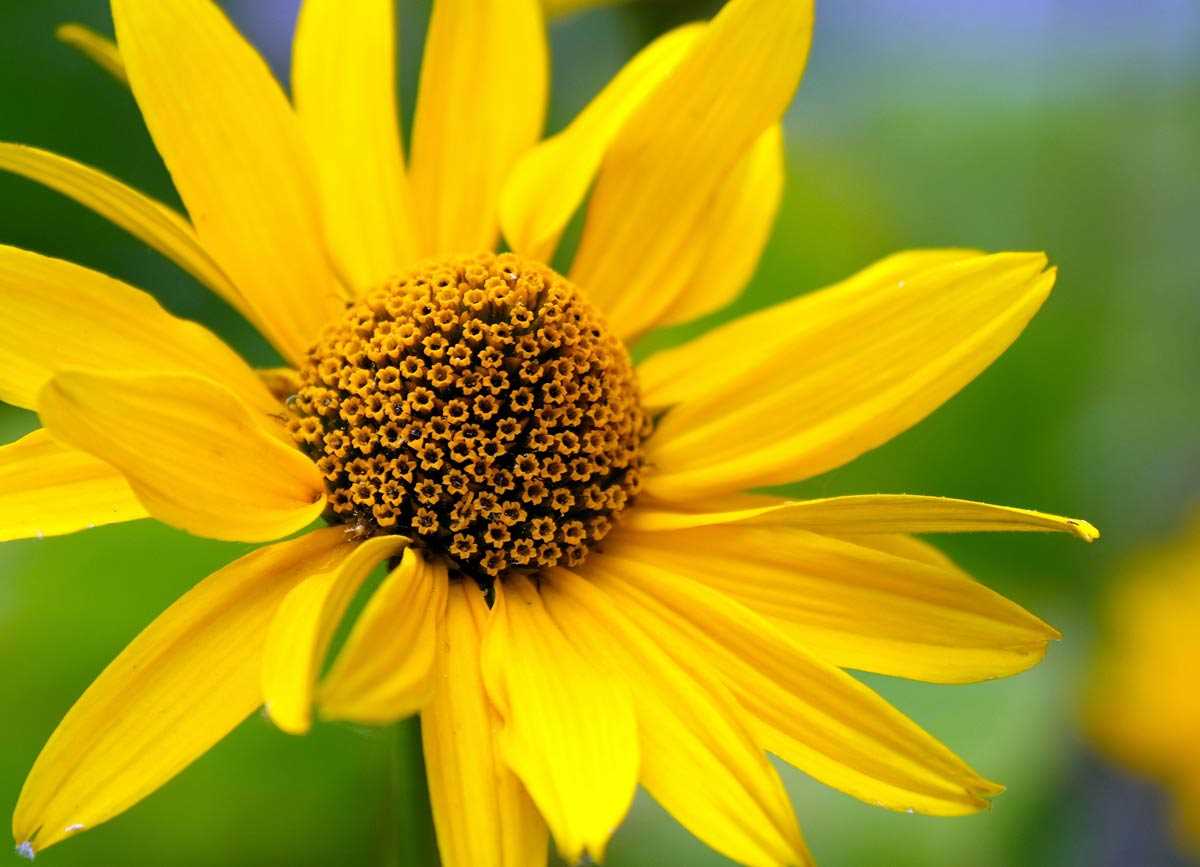
Heliopsis, commonly known as false sunflower, is a beautiful and vibrant flower that can add a touch of sunshine to any garden. With its striking bright yellow flowers and dark green foliage, heliopsis is not only a wonderful addition to flower beds and borders, but it also attracts butterflies and other beneficial insects.
Growing heliopsis in the open ground is relatively easy, but there are a few tips and tricks to ensure that your plants thrive. First and foremost, heliopsis prefers full sun, so be sure to choose a location in your garden that receives at least six hours of direct sunlight per day. While heliopsis can tolerate some shade, it will produce fewer flowers and may become leggy if grown in too much shade.
When it comes to soil, heliopsis is not too picky and can tolerate a wide range of soil conditions. However, it will do best in well-draining soil that is rich in organic matter. Before planting, amend the soil with compost or well-rotted manure to improve its fertility and drainage.
One important thing to keep in mind when growing heliopsis is that it can spread quite vigorously. To prevent it from taking over your garden, be sure to space the plants at least two feet apart. Regular pruning and deadheading can also help control its growth and promote bushier, fuller plants.
Overall, heliopsis is a low-maintenance and versatile flower that can add a burst of color to any garden. By providing it with the right growing conditions and a little care, you can enjoy its bright and cheerful blooms year after year.
Heliopsis: Tips for Growing and Caring for Heliopsis
Introduction
Heliopsis is a beautiful flowering plant that is native to North America. It is also known as false sunflower due to its resemblance to the sunflower. Heliopsis is a great addition to any garden or landscape, as it produces vibrant yellow flowers that bloom from summer to fall. Here are some tips for growing and caring for heliopsis in the open ground:
Choosing the Right Location
The first step in growing heliopsis is to choose the right location. Heliopsis thrives in full sun, so it is important to select a spot in your garden that receives at least 6-8 hours of direct sunlight per day. The soil should be well-drained and rich in organic matter. Heliopsis can tolerate a wide range of soil types, but it prefers slightly acidic to neutral soil.
Planting Heliopsis
Once you have chosen the right location, it’s time to plant heliopsis. Dig a hole that is slightly larger than the root ball of the plant. Place the plant in the hole, making sure that the top of the root ball is level with the soil surface. Backfill the hole with soil, firming it gently around the plant to remove any air pockets. Water the plant thoroughly after planting to help settle the soil.
Watering and Fertilizing
Heliopsis requires regular watering to keep the soil evenly moist, but not waterlogged. It is important to water deeply, allowing the water to penetrate the root zone. Avoid overhead watering, as this can lead to leaf diseases. Fertilize heliopsis in early spring with a balanced slow-release fertilizer. Repeat the application in late summer to promote healthy growth and flowering.
Pruning and Deadheading
To keep heliopsis looking neat and tidy, it is recommended to prune the plant in early spring before new growth begins. Cut back the stems to about 6 inches above the ground. Deadhead the spent flowers throughout the blooming season to encourage continuous blooming. This will also prevent the plant from self-seeding and becoming invasive.
Pest and Disease Control
Heliopsis is generally resistant to pests and diseases, but it can occasionally be affected by powdery mildew, aphids, or slugs. Monitor the plant regularly for any signs of infestation and take appropriate measures to control them. Applying a fungicide or insecticide as needed can help prevent and treat these issues.
Winter Care
In colder climates, heliopsis may require some winter protection. After the first frost, cut back the stems to about 3-4 inches above the ground. Apply a layer of mulch around the base of the plant to help insulate the roots. This will protect the plant from frost damage and ensure its survival through the winter.
Conclusion
Heliopsis is a beautiful and low-maintenance plant that can add a pop of color to your garden. By following these tips for growing and caring for heliopsis, you can enjoy its vibrant flowers and attractive foliage year after year.
Growing Heliopsis in the Open Ground
Heliopsis is a beautiful flowering plant that can add vibrant colors to your garden. Here are some tips on how to grow and care for heliopsis in the open ground:
- Choose the right location: Heliopsis thrives best in full sun, so choose a spot in your garden that receives at least 6 hours of direct sunlight per day. It can tolerate some shade, but too much shade can result in leggy growth and fewer flowers.
- Prepare the soil: Heliopsis prefers well-draining soil that is rich in organic matter. Before planting, amend the soil with compost or aged manure to improve its fertility and drainage. Avoid heavy clay soils, as they can lead to root rot.
- Planting: Dig a hole that is twice the width of the plant’s root ball and just as deep. Place the heliopsis in the hole, making sure the top of the root ball is level with the soil surface. Backfill the hole with soil, firming it gently around the plant.
- Watering: Heliopsis prefers regular watering, especially during dry periods. Provide enough water to keep the soil moist, but not waterlogged. Be careful not to overwater, as this can lead to root rot.
- Fertilizing: Feed heliopsis with a balanced fertilizer in early spring, before new growth emerges. Follow the package instructions for dosage and application method. Avoid over-fertilizing, as this can result in excessive leaf growth and fewer flowers.
- Maintenance: Heliopsis is a low-maintenance plant, but there are a few tasks to keep it healthy and tidy. Deadhead spent flowers regularly to encourage continuous blooming. Cut back the stems by half in late spring or early summer to promote bushier growth. Divide the plants every 2-3 years to prevent overcrowding and improve vigor.
- Pest and disease control: Heliopsis is generally pest and disease resistant. However, it can occasionally be affected by aphids, slugs, or powdery mildew. Monitor your plants regularly and take appropriate action if any issues arise.
- Winter care: Heliopsis is a hardy perennial that can withstand frost and cold temperatures. In late fall, cut back the stems to ground level and mulch around the base of the plant to protect the roots from freezing. Remove the mulch in spring when new growth appears.
By following these tips, you can enjoy the beauty of heliopsis in your garden for years to come. Happy gardening!
Heliopsis Soil and Sun Requirements
Soil Requirements
Heliopsis plants prefer well-drained soil that is rich in organic matter. The soil should have a pH level between 6.0 and 7.0, which is slightly acidic to neutral. It is important to ensure that the soil does not become waterlogged, as this can lead to root rot and other diseases. To improve drainage, you can amend the soil with compost or peat moss.
Sun Requirements
Heliopsis plants thrive in full sun to part shade conditions. They require at least 6-8 hours of direct sunlight each day to grow and flower properly. However, they can tolerate some shade, especially in hot climates. It is important to provide enough sunlight for the plants to ensure healthy growth and abundant blooms.
Watering Requirements
- Provide regular watering, especially during dry periods.
- Water deeply to encourage deep root growth.
- Avoid overwatering, as this can lead to root rot.
- Allow the soil to dry out slightly between waterings.
Fertilizer Requirements
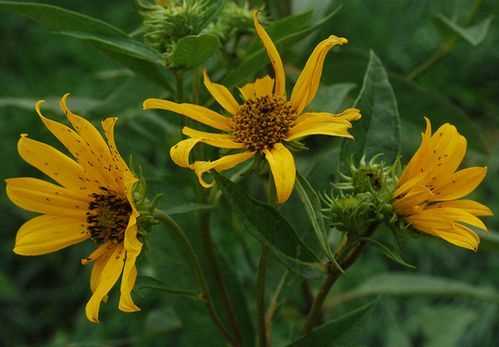
Heliopsis plants benefit from regular fertilization to promote healthy growth and abundant blooms. Use a balanced, slow-release fertilizer in early spring when new growth appears. Follow the package instructions for application rates and timing.
Watering Heliopsis Plants
Proper watering is essential for the health and vitality of Heliopsis plants. These perennials have moderate water needs and prefer a consistently moist but not overly saturated soil. Here are some tips for watering your Heliopsis plants:
- Establishment: During the first few weeks after planting, it is important to keep the soil evenly moist to help the plants establish a strong root system. Water deeply and thoroughly, ensuring that the water reaches the root zone.
- Regular watering: Once established, Heliopsis plants need regular watering, especially during periods of dry weather. Aim to provide about 1 inch (2.5 cm) of water per week, either through rainfall or supplemental watering.
- Watering frequency: Water your Heliopsis plants deeply but infrequently. Instead of shallow watering every day, water deeply every 3-4 days to encourage the roots to grow deeply into the soil.
- Time of day: Water your Heliopsis plants early in the morning or late in the evening to reduce evaporation and give the plants ample time to dry before nighttime. Avoid watering during the hottest part of the day to prevent water loss through evaporation.
- Soil moisture: Check the soil moisture level before watering. Stick your finger into the soil up to the second knuckle. If the soil feels dry at that depth, it is time to water. If it feels moist, wait for a day or two and check again.
- Watering methods: Use a watering can or a garden hose with a soft spray nozzle to water your Heliopsis plants. Avoid using a strong jet of water, as it can damage the foliage. Water the plants at the base, close to the soil, rather than overhead, to prevent moisture-related diseases.
- Mulching: Apply a layer of organic mulch, such as wood chips or shredded leaves, around the base of your Heliopsis plants. Mulching helps retain soil moisture, prevent weed growth, and regulate soil temperature.
By following these watering tips, you can ensure that your Heliopsis plants receive adequate moisture for healthy and vigorous growth.
Fertilizing Heliopsis Plants
Proper fertilization is an important component of caring for heliopsis plants in the open ground. Fertilizing your heliopsis plants will help promote healthy growth, abundant blooms, and overall plant vigor. Here are some tips for fertilizing your heliopsis plants:
1. Choose the right fertilizer
When it comes to fertilizing heliopsis plants, it is best to use a balanced fertilizer that is specifically formulated for flowering plants. Look for a fertilizer with a ratio of nitrogen (N), phosphorus (P), and potassium (K) such as 10-10-10 or 14-14-14. These ratios provide a good balance of nutrients that heliopsis plants need for healthy growth.
2. Apply fertilizer at the right time
To ensure optimal growth and blooming, it is important to apply fertilizer at the right time. In general, you should fertilize heliopsis plants in early spring, just as new growth begins to emerge. This will give the plants a boost of nutrients to support their growth throughout the growing season.
3. Follow the recommended dosage
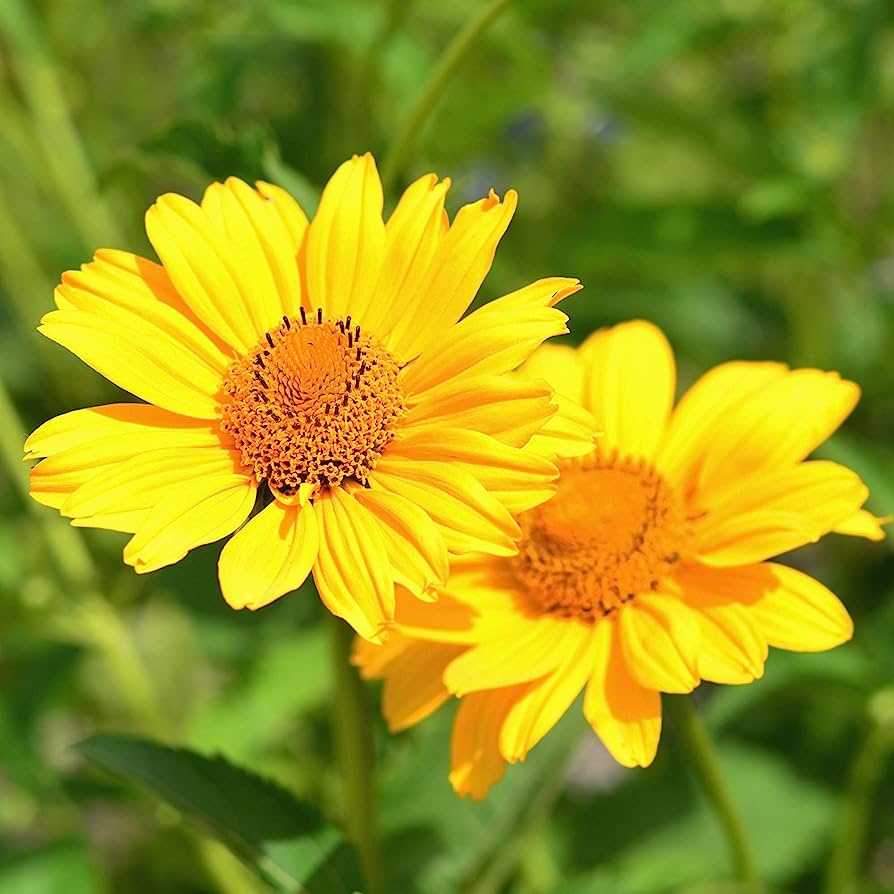
When applying fertilizer to your heliopsis plants, it is important to follow the recommended dosage on the fertilizer packaging. Applying too much fertilizer can lead to excessive growth, weak stems, and reduced flowering. On the other hand, applying too little fertilizer may result in poor growth and lackluster blooms. Follow the instructions carefully to avoid overfertilization or underfertilization.
4. Apply fertilizer evenly
When applying fertilizer to your heliopsis plants, be sure to spread it evenly around the base of the plants. This will ensure that the nutrients are distributed evenly throughout the root zone. Avoid placing the fertilizer directly on the foliage or flowers, as this can cause burning or damage.
5. Water after fertilization
After applying fertilizer to your heliopsis plants, be sure to water them thoroughly. This will help to activate the fertilizer and ensure that the nutrients are absorbed by the roots. Watering after fertilization also helps to prevent fertilizer burn and helps to distribute the nutrients evenly throughout the soil.
6. Monitor plant response
After fertilizing your heliopsis plants, monitor their response to the fertilizer. Look for signs of improved growth, increased flowering, and overall plant health. If you notice any negative effects such as leaf burn or stunted growth, adjust your fertilization practices accordingly.
Following these tips for fertilizing your heliopsis plants will help to ensure their health, vigor, and optimal blooming throughout the growing season.
Pruning Heliopsis for Better Growth
Pruning is an essential task for maintaining the health and appearance of Heliopsis plants. Proper pruning techniques can help promote better growth and overall plant vigor. Here are some tips for pruning Heliopsis:
1. Timing
It is best to prune Heliopsis in early spring before new growth begins. This allows the plant to recover quickly and encourages the development of strong and healthy stems.
2. Deadheading
Regular deadheading of spent flowers is important for extending the blooming period of Heliopsis. This not only keeps the plant looking neat and tidy but also prevents the plant from putting energy into producing seeds.
3. Thinning
Thinning out the plant by removing overcrowded or weak stems is essential for promoting better air circulation and reducing the risk of diseases. This can be done by cutting back some of the older stems at ground level.
4. Cutting Back
In early summer, you can cut back the Heliopsis stems by about one-third to encourage branching and a more compact growth habit. This will result in more flowers and a bushier appearance.
5. Pruning After Blooming
After the blooming period is over, you can cut back the entire plant to about half its height. This will help prevent the plant from becoming too leggy and will encourage fresh new growth for the following season.
6. Disinfecting Tools
Before pruning, make sure to disinfect your tools to prevent the spread of diseases. This can be done by wiping the blades with rubbing alcohol or a solution of bleach and water.
7. Cleaning Up
After pruning, make sure to clean up any debris or fallen leaves around the plant. This helps maintain a clean and tidy growing environment and reduces the risk of diseases.
8. Observing Plant Response
Pay attention to how the plant responds to pruning. If you notice any signs of stress or decline after pruning, adjust your pruning techniques accordingly in the future.
By following these pruning tips, you can help ensure the better growth and overall health of your Heliopsis plants. Happy pruning!
Controlling Pests and Diseases in Heliopsis
Heliopsis plants are generally resistant to most diseases and pests. However, certain problems can occur, and it’s important to be aware of them in order to prevent and manage any issues that may arise.
Pests
Heliopsis plants are rarely bothered by pests, but there are a few that you may encounter:
- Aphids: These tiny insects can gather on the leaves and stems, sucking the plant juices and causing yellowing and wilting. Use insecticidal soap or a strong water spray to control them. Ladybugs can also help control aphids.
- Slugs and snails: These slimy creatures can munch on the leaves and flowers of heliopsis. Use organic slug and snail baits or barriers to protect your plants.
Diseases
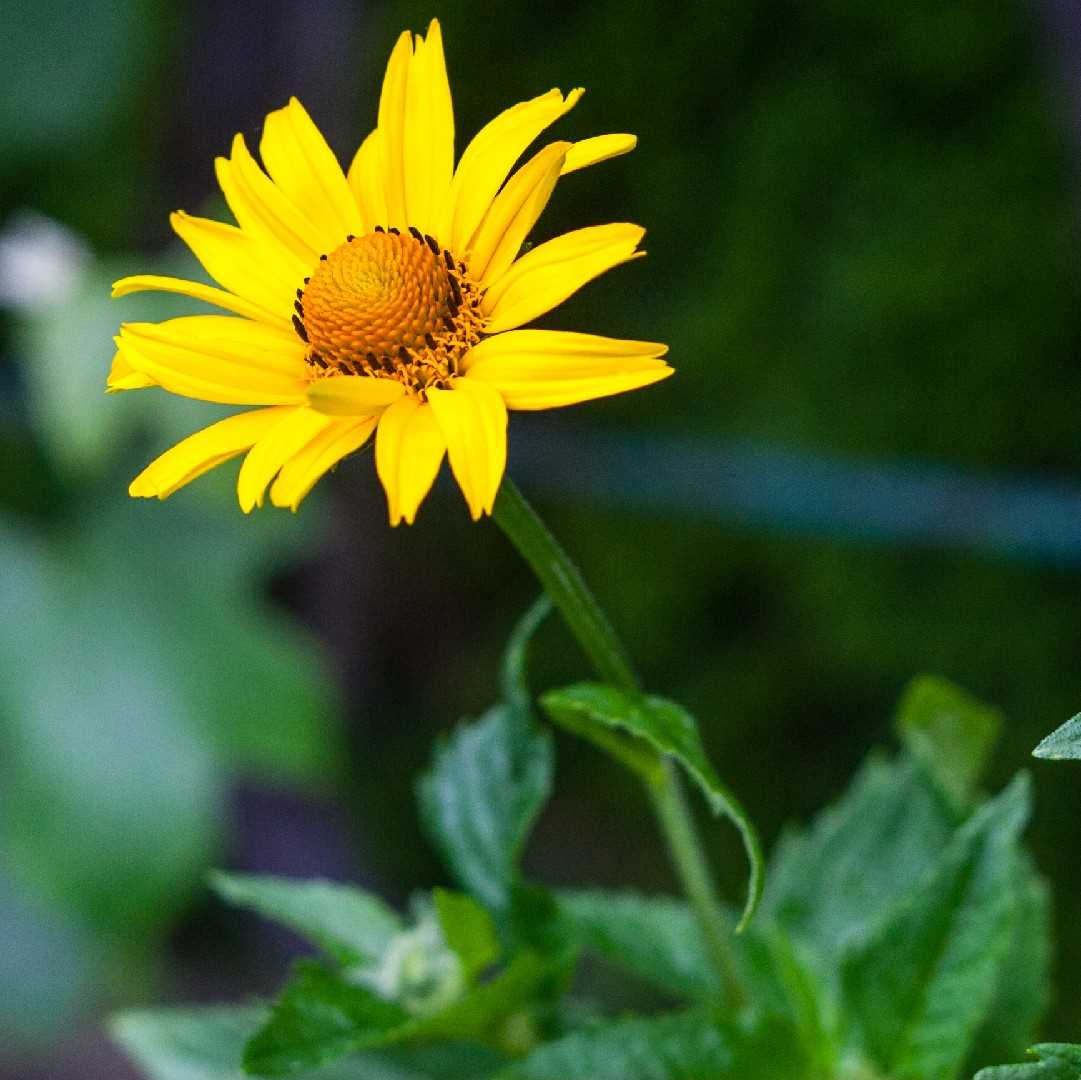
Heliopsis plants are generally disease-resistant, but some common problems include:
- Powdery mildew: This fungal disease appears as a white powdery coating on the leaves. To prevent powdery mildew, ensure good air circulation around the plants and avoid overhead watering. If necessary, use a fungicide spray.
- Rust: Rust can cause orange or brown spots on the leaves. Remove any infected leaves and destroy them to prevent the spread of the disease. Apply a fungicide if the problem persists.
- Crown rot: This fungal disease affects the roots and base of the plant, causing wilting and decay. Avoid overwatering and ensure proper drainage to prevent crown rot. Remove and destroy infected plants.
Tips for Disease and Pest Prevention
Here are some general tips to prevent and control diseases and pests in your heliopsis plants:
- Plant heliopsis in well-draining soil to prevent waterlogging and root rot.
- Water at the base of the plants to keep the foliage dry, as wet leaves can promote disease development.
- Provide adequate spacing between plants to ensure good air circulation.
- Remove any dead or diseased plant material promptly.
- Inspect your plants regularly for signs of pests or diseases, and take action as soon as you notice any issues.
- Encourage beneficial insects, such as ladybugs and lacewings, to help control pests naturally.
- If necessary, use organic or chemical pesticides or fungicides according to the label instructions.
By following these guidelines, you can help keep your heliopsis plants healthy and free from pests and diseases.
Winter Care for Heliopsis Plants
During the winter season, it is important to provide proper care for your heliopsis plants to ensure their survival and health. Here are a few tips to help you care for your heliopsis plants during the winter:
1. Cut back the foliage
Before the first frost, cut back the foliage of your heliopsis plants to a height of around 6 inches. This will help to prevent any disease or pests from overwintering in the plant debris.
2. Mulch around the base
After cutting back the foliage, apply a layer of mulch around the base of the plants. This will help to insulate the soil and protect the roots from extreme temperatures.
3. Protect from harsh conditions
If your area experiences harsh winter conditions, such as freezing temperatures or strong winds, you may need to provide additional protection for your heliopsis plants. This can be done by covering them with a layer of burlap or using a protective barrier, such as a cold frame or hoop house.
4. Water sparingly
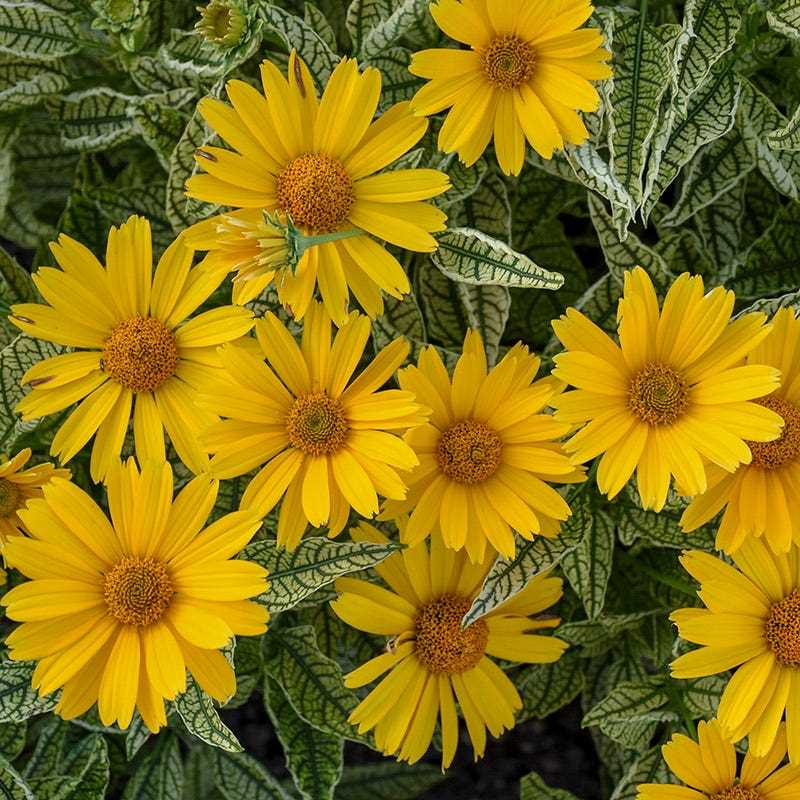
During the winter, heliopsis plants require less water as they enter a period of dormancy. Water sparingly, only when the soil is dry to the touch.
5. Monitor for pests and diseases
Keep an eye out for any signs of pests or diseases during the winter months. If you notice any issues, take immediate action to prevent them from spreading and causing further damage to your plants.
6. Prune in early spring
In early spring, once the danger of frost has passed, prune back any remaining dead or damaged foliage from your heliopsis plants. This will help to promote healthy growth and prevent any potential diseases.
By following these winter care tips, you can ensure the health and survival of your heliopsis plants during the colder months, and enjoy their beautiful blooms year after year.
Propagation Methods for Heliopsis
Heliopsis can be propagated through various methods, such as division, seed sowing, and stem cuttings. Here are the most common propagation methods for Heliopsis:
1. Division
Division is the most common and easiest way to propagate Heliopsis. It is best done in spring or early fall when the plant is not actively flowering. Follow these steps to divide Heliopsis:
- Carefully dig up the entire plant to be divided.
- Separate the clumps into smaller sections, making sure each section has roots attached.
- Plant the divided sections in prepared soil, ensuring they are at the same depth as before.
- Water the newly divided plants thoroughly and keep them well-watered until they are established.
2. Seed sowing
Heliopsis can be propagated from seeds, but the success rate may vary. Here’s how to sow Heliopsis seeds:
- Collect the seeds from the dried flower heads of mature Heliopsis plants.
- Prepare a seed tray or small pots with well-draining soil mix.
- Sow the seeds on the surface of the soil and lightly press them down.
- Mist the soil with water to keep it moist, but not wet.
- Place the seed tray or pots in a warm and bright location, such as a greenhouse or a sunny windowsill.
- Keep the soil consistently moist and germination should occur within 2-3 weeks.
- Once the seedlings have grown large enough, transplant them into larger pots or directly into the garden.
3. Stem cuttings
Propagation from stem cuttings is another option for propagating Heliopsis. Here’s how to propagate Heliopsis from stem cuttings:
- Select a healthy stem from the parent plant that has not yet flowered.
- Cut a 4-6 inch section from the stem, just below a leaf node.
- Remove the lower leaves from the cutting, leaving only a few leaves at the top.
- Dip the cut end of the stem in rooting hormone to encourage root development.
- Plant the cutting in a well-draining potting mix or directly into the garden soil.
- Keep the soil moist, but not waterlogged, and place the cutting in a bright and warm location.
- Roots should begin to develop within 2-3 weeks. Once the cutting has established roots, it can be transplanted to a larger container or into the garden.
By utilizing these propagation methods, you can easily propagate and expand your Heliopsis collection. Experiment with different methods to find the one that works best for you.
Questions and Answers:
How tall can heliopsis grow?
Heliopsis can grow to be anywhere from 2 to 4 feet tall.
How long do heliopsis flowers last?
Heliopsis flowers typically last for about 4 to 6 weeks.
What is the best time to plant heliopsis?
The best time to plant heliopsis is in the spring or fall, after the danger of frost has passed.
Can heliopsis tolerate full sun?
Yes, heliopsis prefers full sun and will tolerate partial shade, but it may not bloom as profusely.
Do heliopsis attract butterflies?
Yes, heliopsis is known to attract butterflies and other pollinators to the garden.
How often should heliopsis be watered?
Heliopsis should be watered regularly, especially during dry spells. It is important to keep the soil evenly moist, but not overly saturated.







